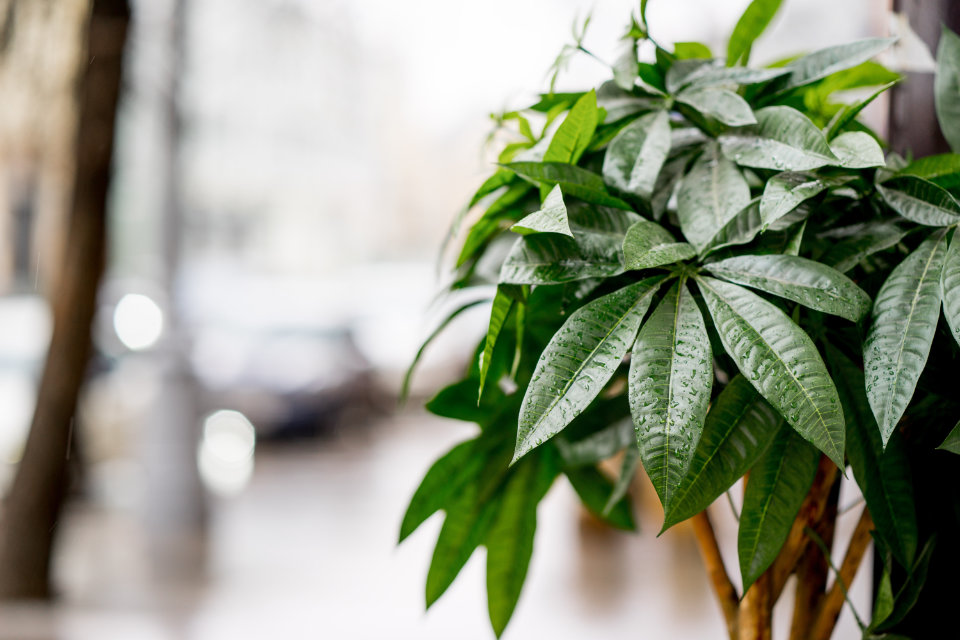The quest for wealth, prosperity, and abundance transcends cultures, and each has its own traditions and symbols. One of the most captivating among these symbols is the Feng Shui Money Tree.
Rooted deeply in ancient Chinese traditions, this tree is not only a sight to behold but carries with it a tale of prosperity and positive energy.
If you’ve ever wondered about the allure of this green, leafy beacon of wealth, let’s embark on a journey to discover the magic behind the Feng Shui money tree.
Table of Contents
Historical Origins and Scientific Background
The Feng Shui Money Tree, often recognized in botanical terms as Pachira aquatica, is not just a staple in Feng Shui practices but also an interesting specimen in the world of botany. Originating from Central and South America, it’s commonly known as the “Malabar chestnut” or “Guiana chestnut.” From its native wetlands and riverbanks, the tree traveled and found a new home in various households around the world, not just for its aesthetic appeal, but for its symbolic significance in Feng Shui.
While the Feng Shui money tree as we know it today is often a smaller, potted version tailored for indoor decor, in the wild, Pachira aquatica can grow up to 60 feet tall. Its shiny green palmate leaves, with each leaf having five to seven leaflets, add to its ornate appearance.
The tree also has showy flowers with long, narrow petals that open up like a banana peel to reveal hair-like structures. Its fruits are large, brown, and woody, resembling a cocoa pod, which contains edible seeds.
The association of this tree with wealth in Feng Shui is an interesting tale. Legend has it that in the ancient days, a poor farmer from Taiwan prayed for wealth and stumbled upon this unique tree. Recognizing its appeal, he grew and sold these trees, eventually amassing fortune. He attributed his wealth to this magical tree, and thus the term “Money Tree” came into existence.
As the tree’s popularity grew, it became synonymous with wealth and prosperity in East Asian cultures, especially within the teachings of Feng Shui.
Its braided trunk, which is often seen in cultivated indoor versions, further solidifies its role in Feng Shui – representing the interweaving of the five elemental energies.
With time, it has become a popular gift item, especially during the Lunar New Year, as a token of good fortune and prosperity.
Understanding the Feng Shui Money Tree
The Feng Shui money tree, revered among various Feng Shui plants, is a rich tapestry of symbolism and significance. A plant that not only adorns countless homes and offices but also infuses them with the energy of prosperity. Here’s an enriched exploration into its distinct features:
- The Braided Trunk: A standout feature of this tree is its beautifully braided trunk, usually comprised of five trunks woven together. In Feng Shui, the number five holds immense significance, representing the five elements – wood, water, fire, earth, and metal. This intertwining of trunks is symbolic of life’s forces coming together harmoniously, channeling positive energy and prosperity.
- The Leaves: The Feng Shui money tree boasts lush green leaves, an emblem of vitality, growth, and renewal. These leaves, often shiny and vibrant, are seen as indicators of financial rejuvenation and the continuous growth of assets.
- Color Symbolism: Dominated by the color green, it’s no coincidence that the money tree is associated with monetary gain. In Feng Shui, green symbolizes renewal, fresh energy, and harmony – all essential ingredients for financial success and stability.
- Origins in Feng Shui: The money tree’s association with wealth is deep-rooted in Feng Shui practices. Legend has it that a poor man prayed for wealth, discovered this unique plant, took it home, and later unraveled its secrets of prosperity. Thus, it became a staple in Feng Shui for those seeking to magnify their wealth and ensure financial stability.
By embracing the Feng Shui money tree in homes or workplaces, individuals tap into a longstanding tradition, seeking harmony, balance, and prosperity in their lives. It’s more than just a plant; it’s a living embodiment of one’s aspirations for abundance and success.

Placement for Prosperity
In the intricate world of Feng Shui, the positioning of objects, especially those with significant symbolic meanings like the Feng Shui money tree, is paramount.
Placing your money tree in the right location can harness and amplify its energies, thus attracting wealth, prosperity, and positive chi into your life. Here are some detailed guidelines for optimal placement:
- Southeast Sector of Your Home or Office: Traditionally known as the ‘Wealth Sector,’ the southeast area of any room or space is believed to govern wealth and prosperity. By placing your Feng Shui money tree here, you’re directly tapping into this wealth energy, thereby inviting opportunities and abundance.
- Near Business Areas: If you’re a business owner or have a home office, consider placing the money tree near your desk or in the main business area. It’s believed to boost the growth of the business and invite more lucrative opportunities.
- Avoiding Bedrooms: While the money tree promotes prosperity, it’s not ideal for bedrooms. The energy it brings might be too yang, potentially disrupting the peaceful and restful energy one desires in a sleeping space.
- Close to Where Wealth is Stored: Another strategic placement is near safes, cash registers, or where you store important financial documents. This positioning symbolizes the protection and growth of your assets.
- Away from Clutter: Ensure the area where you place your money tree is free from clutter. Clutter disrupts the flow of chi, potentially negating or weakening the positive energies of the tree.
- Window Sill Placement: A window sill that gets indirect sunlight can be an excellent spot for the money tree, both from a Feng Shui perspective and for the health of the plant. The light symbolizes the illumination of opportunities, while the tree’s growth in this light can attract more prosperity.
- Avoid Direct Sunlight: While the Feng Shui money tree thrives in indirect sunlight, placing it in direct, harsh sunlight can scorch its leaves, leading to an unhealthy plant. In Feng Shui terms, an unhealthy plant can potentially stagnate or diminish the wealth energy.
- Bathroom Dilemma: Never place the money tree in or directly outside a bathroom. Bathrooms are seen as areas where energy can drain away, and you wouldn’t want your wealth prospects going down the drain!
- Rotation for Balanced Growth: Rotate your plant occasionally to ensure it gets even light and grows symmetrically. A balanced growth is indicative of balanced, harmonious energy flow.
By meticulously considering the placement of your Feng Shui money tree, you align its energy with the natural chi of your space, creating an environment ripe for growth, prosperity, and abundance.
Remember, Feng Shui is about harmony and balance, and placing your money tree in a location that resonates with its energy can make all the difference in tapping into its full potential.
Care and Maintenance
A well-maintained tree is an indicator of your commitment to nurturing your own prosperity.
- Watering: The tree thrives in moderate water levels. Too much or too little can be detrimental.
- Sunlight: Direct sunlight might harm the tree. Indirect light or shade is optimal.
- Signs of Distress: Yellowing leaves might indicate excessive sunlight, while drooping leaves might signal overwatering. Adjust accordingly to restore the tree’s vitality.
Enhancing the Tree’s Energy
To make the most of your tree, consider these enhancement methods:
- Adornments: Draping the tree with red ribbons or tying Chinese coins to its branches can amplify its energy.
- Pairing: Consider positioning it beside a water feature or a wind chime to boost its positive effects.
- Cleansing Rituals: Periodically, cleanse your tree using salt water or by placing it under the moonlight to recharge its energies.
Money Tree vs. Other Prosperity Symbols
The Feng Shui money tree, while popular, is not the only symbol of prosperity. For instance:
- Lucky Bamboo: This is another plant-based emblem of good luck. Unlike the money tree, it requires very little maintenance and can thrive in both water and soil.
- Golden Fish: Representing abundance, a pair of golden fish in a water feature can enhance wealth energy, especially when combined with the money tree.
Common Misconceptions and Myths
While the tree is revered, it’s also shrouded in myths.
- Instant Wealth: Owning a money tree doesn’t guarantee immediate riches. It’s a symbol and an enhancer, not a magic potion.
- Negligence: Some believe that once placed correctly, the tree requires no care. On the contrary, how you care for it mirrors your approach to your own wealth and prosperity.
Conclusion
The Feng Shui money tree, beyond its vibrant leaves and braided trunk, encapsulates a world of beliefs, hopes, and positive energies. It stands testament to traditions like how to pray to Guan Gong, reflects prophecies like the most luckiest zodiac sign in 2024, and embodies the principles of Feng Shui as we see in practices for Feng Shui 2024.
While science might attribute its growth to photosynthesis, its true beauty lies in its symbolic resonance with the human psyche’s timeless quest to harmonize with its surroundings.
So, as you water your money tree next, remember – it’s not just about physical growth but also the prosperity of the soul.
What is a Feng Shui money tree?
A Feng Shui money tree is a plant believed to attract wealth, prosperity, and positive energy when placed correctly in a home or office.
How should I place my Feng Shui money tree for best results?
For optimal wealth and prosperity, position the Feng Shui money tree in the southeast corner of your living space. Ensure it receives indirect sunlight and regular care.
Does the Feng Shui money tree require special care?
While it’s revered for its spiritual benefits, the Feng Shui money tree, like any plant, needs regular watering, indirect sunlight, and occasional pruning.
Can any plant be considered a Feng Shui money tree?
No, the classic Feng Shui money tree is the Pachira Aquatica. However, other plants like the jade plant are also sometimes referred to as money plants in Feng Shui practices.
How does the Feng Shui money tree influence wealth and prosperity?
In Feng Shui, the money tree symbolizes growth and abundance. By caring for it and placing it in a favorable position, it’s believed to harmonize the surrounding environment, attracting wealth and positive energy.



